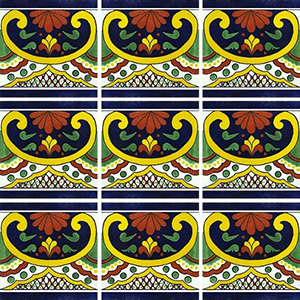The city of Puebla, 80 miles from Mexico City is the largest colonial city in the country, and it is recognized for its magnificent historical center as well as for its centennial  production.
production.
In México, conquistadores found a pottery production of excellent quality, which had been developed over several centuries. It had excellent quality. Pottery was used for domestic utensils, but it also played a significant role in religious ceremonies and funerary rites. In addition, clay was used for the creation of extraordinary sculptures.
During colonial times, Spaniards started bringing ceramics from Europe, as well as establishing Spanish potter workshops. Puebla was the main pottery production center not only of the New Spain, but of the New World. In 1550, 20 years after the city was founded, it already had several workshops of glazed pottery and tiles which would later be known as Talavera de Puebla and that, from that time, became the best known type of ceramics in the country and one of the oldest crafts in Mexico.
Its name comes from the place of origin of the first artisans which produced it and from the fact that the techniques used copied those used in the town of Talavera de la Reyna, in Spain.
Nowadays, its production maintains its primitive character, but its decoration has been modified as its Muslim, Chinese and European influence has been combined with local elements that provide its unique and unmistakable characteristics.
From the beginning hose same workshops produced Talavera tiles, a covering that enriched viceroyal architecture, becoming an element of identity of the urban image that lasts to these days.
 The use of Talavera tiles started in religious architecture, and was later adopted by civilian architecture. They were applied with both decorative and utilitarian purposes. Over time, they were used in larger and larger surfaces until the XVIII century, when the use of tiles was generalized and, combined with bricks, they covered entire facades. By playing with different shapes and sizes, very original designs were created.
The use of Talavera tiles started in religious architecture, and was later adopted by civilian architecture. They were applied with both decorative and utilitarian purposes. Over time, they were used in larger and larger surfaces until the XVIII century, when the use of tiles was generalized and, combined with bricks, they covered entire facades. By playing with different shapes and sizes, very original designs were created.
They adorned floors, patios, stairs, fountains, door frames and windows. In churches, they covered altars, domes and frames, and so Puebla became the city where Talavera will find you at every corner.
